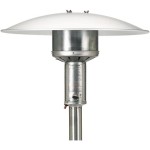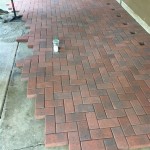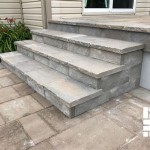How to Level Concrete Patio
Creating a level concrete patio requires meticulous preparation and execution. This process is essential for ensuring a durable and aesthetically pleasing surface. Whether you're building a new patio or leveling an existing one, understanding the steps involved will save you time, effort, and potential headaches in the long run. This comprehensive guide provides detailed instructions on how to level concrete patio, empowering you to achieve a professional-looking result.
1. Preparing the Site for Leveling
Before you can begin the leveling process, a thorough preparation of the site is crucial. This includes clearing the area of any debris, vegetation, or existing structures that may interfere with the leveling process. It's important to ensure that the area is free of any obstacles, such as tree roots or underground utilities, that could affect the stability of the patio. Once the site is clear, the next step is to establish a level foundation for the concrete.
This foundation can be achieved by creating a compacted gravel base. The depth of the gravel base will depend on the desired thickness of the concrete slab. However, a minimum of 4 inches is recommended for most patio applications. The gravel base should be compacted using a tamper or plate compactor to ensure a firm and stable foundation. This compaction process removes air pockets and prevents settling, which can cause unevenness in the concrete slab.
2. Establishing a Level Reference Point
To achieve a level patio, establishing a reference point is essential. This point will serve as a benchmark for determining the height of the concrete slab throughout the entire patio area. A common method for establishing a reference point is using a laser level. This device projects a horizontal beam of light, making it easy to mark the desired elevation on the compacted gravel base.
Alternatively, you can use a builder's level and a string line to establish the reference point. This method involves marking the desired height on a stake at one end of the patio and then using the builder's level and string line to establish the same height on stakes along the perimeter of the patio. Once the reference points are established, you can use a measuring tape to determine the height of the concrete slab at various points within the patio area. This step ensures that the concrete surface will be level throughout.
3. Building a Formwork for the Concrete Slab
Formwork plays a crucial role in shaping and containing the concrete slab during pouring and curing. It acts as a temporary mold that determines the size, shape, and thickness of the patio. Building a sturdy and level formwork is essential for achieving a well-defined and level concrete surface.
The formwork typically consists of wooden boards or plywood panels securely fastened together. The boards should be treated lumber to resist moisture and rot. Before placing the formwork, it's important to ensure that it is level and plumb. Use shims or wedges to adjust the height of the formwork as needed to maintain the desired level. Ensure that the formwork is properly secured to prevent movement during the concrete pouring process.
4. Pouring and Leveling the Concrete
The concrete pouring process requires careful planning and execution to ensure a smooth and level surface. It's recommended to have assistance during this step, as it can be challenging to manage large quantities of concrete alone. Before pouring the concrete, ensure that the formwork is securely in place and that the area is free of any debris.
Pour the concrete into the formwork in a continuous flow, starting from one end and working towards the other. Once the concrete is poured, use a concrete screed to level the surface. A screed is a long, straight piece of wood or metal that rests on the formwork and is used to drag across the concrete, smoothing out any bumps or irregularities. As you screed the concrete, ensure that it is level with the reference points established earlier.
5. Curing and Finishing the Concrete
After pouring and leveling the concrete, the next step is to allow it to cure. Curing is the process of maintaining moisture and temperature control to allow the concrete to gain strength. This process can take several days, depending on the weather conditions and the type of concrete used. To facilitate curing, keep the concrete surface moist by covering it with a plastic sheet or damp burlap sacks.
Once the concrete has reached a certain level of strength, you can begin the finishing process. This involves smoothing and polishing the surface to achieve the desired aesthetic appearance. Several finishing techniques can be applied, including broom finishing, trowel finishing, and acid staining. The chosen finishing technique will depend on the intended use of the patio and personal preferences.

Patio Lifting Leveling Repair Concrete Hero

A 1 Concrete Leveling Pittsburgh Patio Repair

Level A Concrete Patio Using Polyurethane Foam Injection

Level And Stain A Concrete Porch Self Leveling

Summer Is The Perfect Time To Level Your Concrete Patio In Denver

Concrete Patio Repair Leveling Lexington

Quikrete Building A Concrete Patio

Leveling Uneven Concrete Patios Doityourself Com

Concrete Leveling What It Is And How Works

Quikrete Building A Concrete Patio
Related Posts








